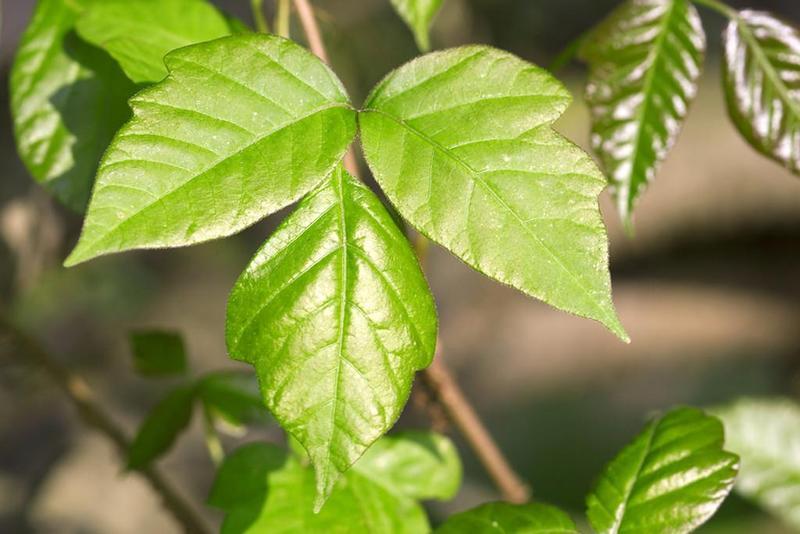How to treat poison ivy naturally
How to treat poison ivy naturally
The easiest way to ruin your day in the outdoors is to meet up with a thatch of poison ivy or poison oak. Skin contact with the leaves, stems and roots of these ubiquitous plants spells an itchy, blister-filled, painful rash that can last one to three weeks depending on the severity. We rounded up some natural remedies that can take the heat and sting out of poisonous plants and provide relief from the pain.
Aloe vera
According to Christopher Nyerges, a survivalist, director of the School of Self-Reliance in San Gabriel Valley, Calif., and author of “Wild Foods and Useful Plants, aloe vera is your best option when it comes to rashes.
“It’s superlative, and causes cooling and immediate healing,” Nyerges says. For quick relief, simply break open the leaf of the aloe vera and apply the gel over affected areas.
Manzanita leaf tea
Manzanita leaf is an astringent and helps to dry up blisters.
Nyerges has studied how local Native Americans ate these leaves regularity to become immune to poison oak. “I started eating the leaves maybe 25 years ago, and do so every spring, and I no longer get the rash,” he says. However, he doesn’t recommend this approach to others because everybody’s body chemistry is different and it may not be as effective.
Instead, crush a handful of fresh Manzanita leaves and branch tips and boil into a thick tea, then apply it to your skin as hot as is comfortable and let your skin air dry. Re-apply a few times per day.
Jewelweed
Christopher Hanifin, PA-C in the department of physician assistants at Seton Hall University in South Orange, N.J., recommends jewelweed as the go-to remedy for poison ivy.
“It is a plant in the same family as impatiens, and the juice from the stem has long been held to reduce the effect of exposure to rhus family plants (poison ivy, oak and sumac),” he says.
Simply crush the stem of the plant and rub the liquid into the skin. Conveniently, jewelweed usually grows near water or in shallow ponds next to poison ivy and oak.
Mugwort
Mugwort may be best used as a way to prevent getting a rash in the first place, but some people swear by mugwort’s healing properties and ability to neutralize the urushiol, the active ingredient in poison oak.
Simply grind fresh mugwort leaves between hands and rub the clump of plant matter on the rash. You can also boil fresh leaves and make a tea to apply to the affected area directly, or you can soak gauze or a cheesecloth in the tea and lay over skin.
Honeysuckle juice
Another plant that can relieve discomfort is honeysuckle.
Place about 3 cups of honeysuckle leaves and 1 cup of water in a blender and puree. Strain leaves with cheese cloth and save the juice. Apply liberally to the rash for relief of itching.
Rhubarb
You may like it in pie, but rhubarb from the garden can also provide instant relief from the itchy rash.
Break open the stem and rub it on your rash two or three times daily.
Milkweed
Milkweed doesn’t just relieve Milkweeditching — it also helps to dry and heal blisters for a fast healing process.
Pull the leaves off the milkweed plant and dab milk sap over the rash and any blisters, and then let it dry; itching should be relieved within a few minutes.
Baking soda
Yet another use for this handy household item!
Make a paste of baking soda with 3 teaspoons baking soda and 1 teaspoon water and smear the affected areas to help draw out the poison. When the mixture dries, the baking soda flakes away providing temporary relief. You can also try soaking in a warm baking soda bath by adding a cupful of baking soda to bathwater, or you can steep gauze pads in a solution of 2 teaspoons baking soda with 1 quart of water and apply gauze pads over blisters up to four times per day. Be sure to keep it away from your eyes!
The blow dryer technique
This method may be affective by using heat to pull histamines that are flooding the rash areas from the surface of the skin temporarily until they build up again in a few hours.
Use a blow dryer on a very warm setting and shake it over the skin vigorously, being careful not to leave the dryer on any one patch of skin too long. A severe reaction may require repeat blow-drying as often as every four hours. As the rash dries out and weakens, you may only need to use the dryer every 8 or 12 hours or so, and eventually just once daily.
Hot shower
Similarly, you can use heat from a hot shower to pull the histamines away from your skin temporarily.
Take a hot shower — as hot as you can stand it — and let the water flood the rash area. For limited exposure, flush arms or legs under running water every few hours.
Oatmeal bath
Naturally soothing, oatmeal is often used in natural beauty products — especially for skin care.
Grind 1 cup of old-fashioned oatmeal in the blender until it becomes fine powder, then pour into a piece of cheesecloth, or the leg of clean pantyhose. Knot the material, and tie it around the faucet of your bathtub so the bag is suspended under the running water. Fill the tub with hot water and soak for 30 minutes. You can also apply the oatmeal directly to the blisters for immediate relief.
by Jennifer Nelson For Mother Nature Network
Be the first to post a message!
